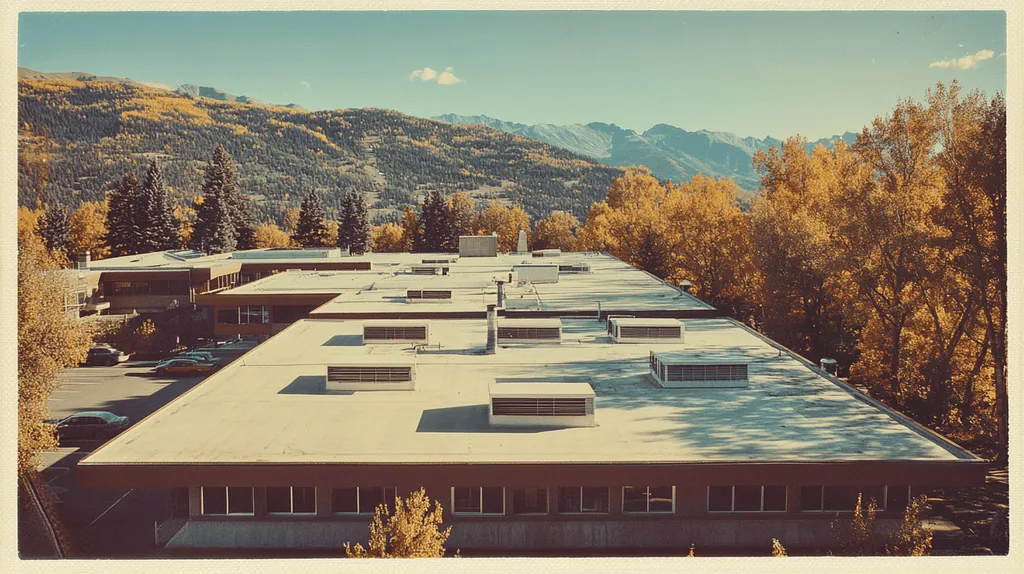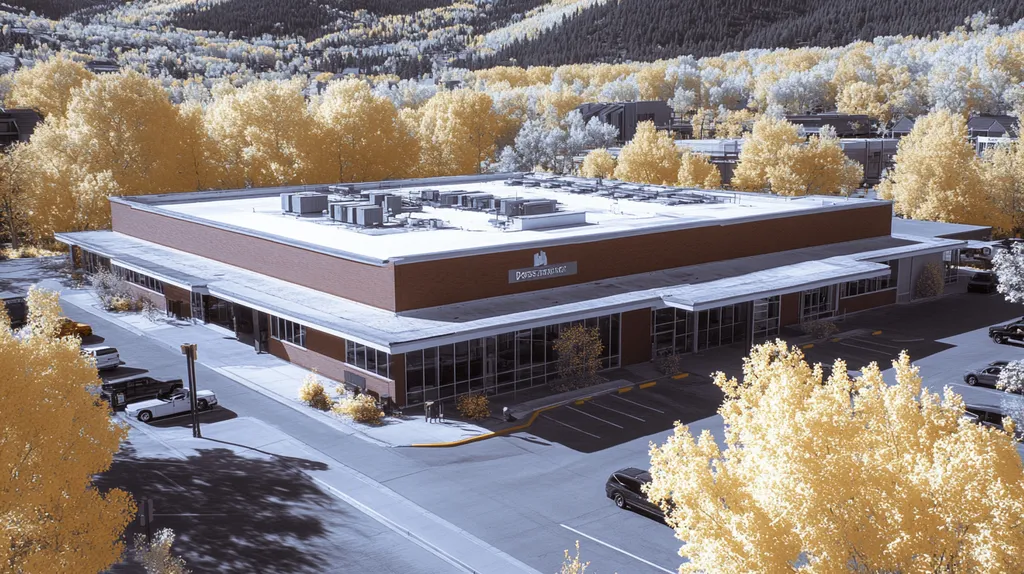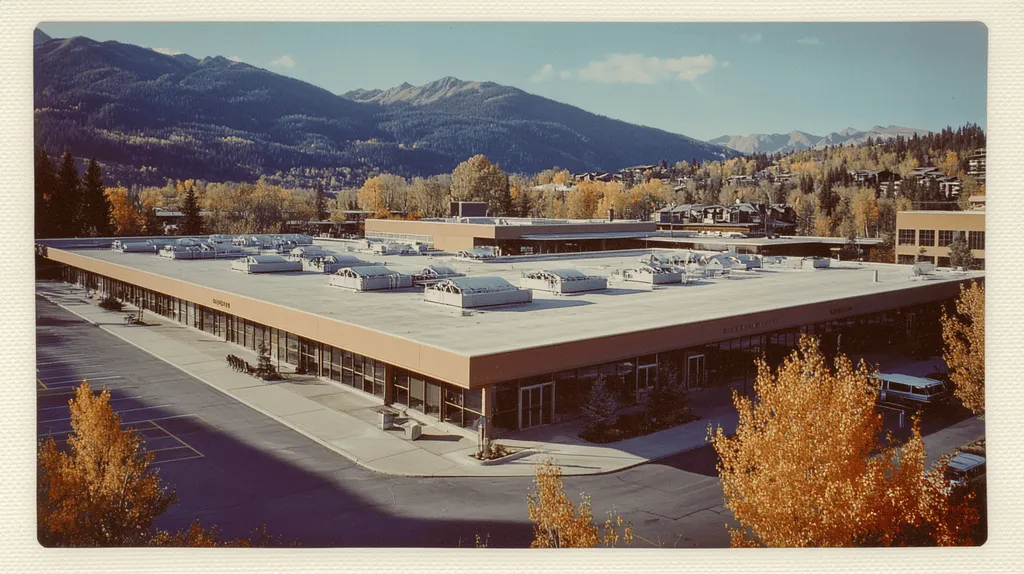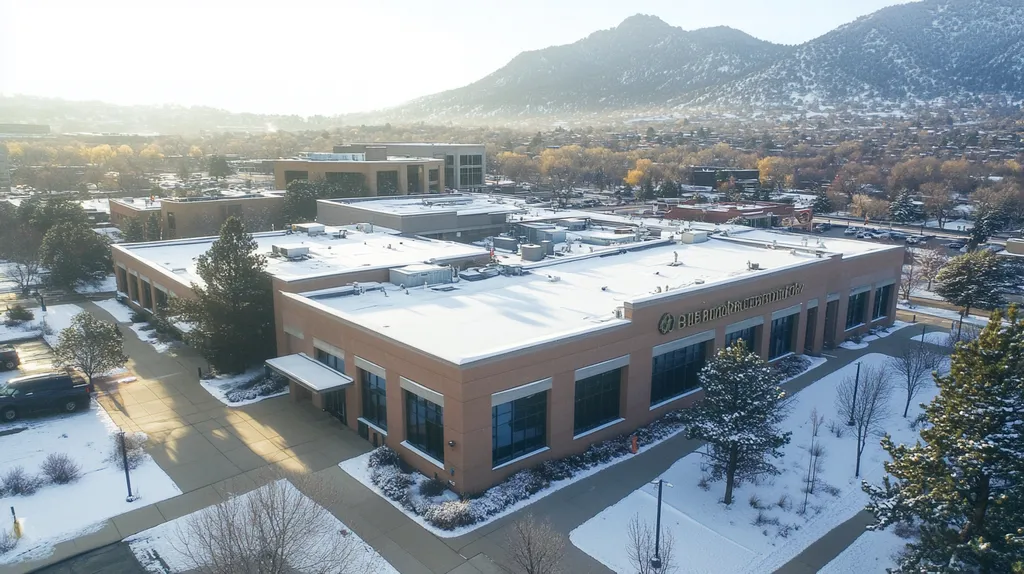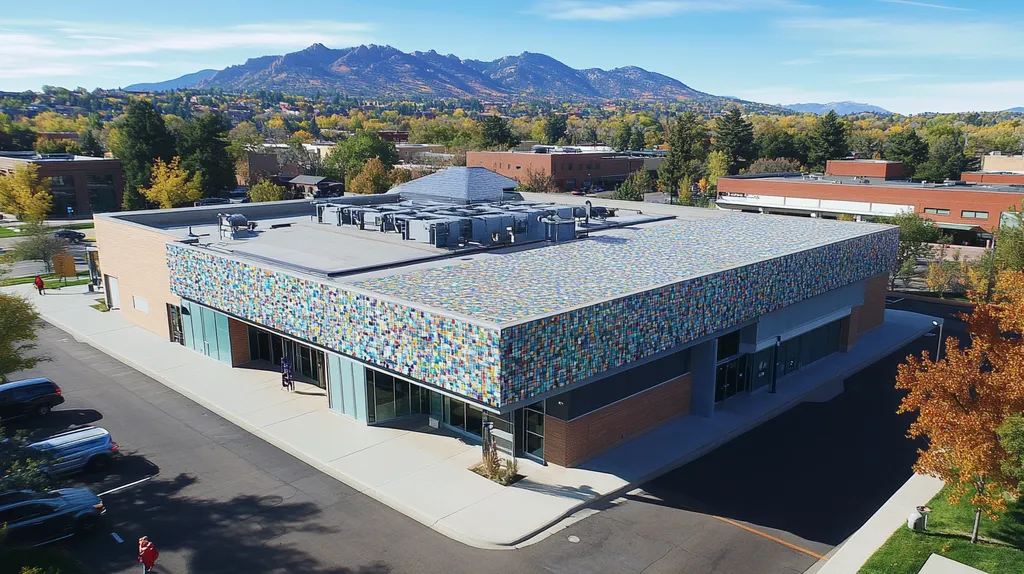Welcome to today’s Battle Royale featuring two roofing heavyweights: “TPO” in the east corner versus “PVC” in the west!
Tonight’s showdown pits these contenders against each other across six punishing rounds designed to test every aspect of their performance for commercial roof type and climate industry.
At stake? Millions in potential costs, decades of building protection, and the critical performance demands of modern commercial and industrial facilities.
Our professional judging panel will evaluate each round on technical merit, real-world performance, and value delivery. After all six rounds, we’ll declare our ultimate champion.
Ladies and gentlemen, facility managers and building owners… it’s time to rumble!
ROUND 1: INITIAL COSTS & INSTALLATION
Commercial roofing decisions carry significant financial implications, with installation costs often representing 60-70% of total project budgets. Material selection and installation approach can make or break both short-term finances and long-term facility operations. Understanding the true cost implications of TPO versus PVC goes far beyond simple material pricing.
Material Expenses
TPO membrane costs typically range from $4.00 to $5.50 per square foot installed, making it an attractive option for budget-conscious facility managers. This lower price point has helped drive TPO’s rapid market growth, particularly in regions with moderate climate conditions.
PVC roofing materials command premium pricing, usually $5.50 to $7.50 per square foot installed. This higher cost reflects PVC’s advanced chemical formulation and enhanced durability characteristics.
While both materials offer compelling value propositions, TPO’s lower initial cost creates significant upfront savings on large commercial projects. For typical warehouse installations exceeding 20,000 square feet, this price difference can amount to tens of thousands of dollars.
In this category, TPO claims a clear ADVANTAGE due to consistently lower material costs across all thickness options.
Installation Complexity
TPO installation follows straightforward processes that most commercial roofing crews can execute efficiently. The material’s lighter weight and flexible nature allow for faster positioning and fewer seams.
PVC installation demands more technical expertise, particularly around seam welding and flashing details. The material’s rigidity requires additional care during layout and attachment, often necessitating more experienced installation teams.
While both systems use heat-welded seams, TPO’s more forgiving nature results in fewer installation complications. This translates to reduced labor hours and lower risk of installation errors.
TPO gains another ADVANTAGE here through its more straightforward installation requirements.
Project Timeline
TPO installations typically complete 20-30% faster than comparable PVC projects due to simpler handling characteristics. This acceleration can reduce facility disruption and allow for quicker return to normal operations.
PVC projects require additional time for precise detail work and more careful material handling. While this attention to detail supports long-term performance, it extends the overall project duration.
Weather sensitivity affects both materials similarly, but TPO’s faster installation provides better opportunities to work between weather events. This advantage becomes particularly important in regions with unpredictable weather patterns.
TPO secures the ADVANTAGE in timeline considerations through consistently faster completion rates.
ROUND 1 WINNER: TPO
ROUND 2: DURABILITY & LIFESPAN
When commercial roofing systems fail prematurely, the consequences ripple through entire operations, from budget overruns to potential inventory damage. A single roof leak can disrupt business operations and lead to hundreds of thousands in damages. Understanding how TPO and PVC membranes perform over time isn’t just about maintenance planning – it’s about protecting critical business assets and operations.
Durability Under Environmental Stress
Environmental stressors like UV radiation, chemical exposure, and temperature fluctuations constantly challenge roofing system integrity. Commercial facilities must evaluate how different membranes hold up under their specific conditions.
TPO membranes demonstrate good flexibility and heat resistance in moderate climates. However, early generations showed vulnerability to intense UV exposure and extreme temperature cycling, though newer formulations have improved these characteristics.
PVC membranes excel in harsh environments, particularly where chemical resistance matters. Their proven chemical formulation maintains structural integrity even when exposed to industrial emissions, grease discharge, and other corrosive elements.
With superior resistance to environmental degradation and chemical exposure, PVC claims the ADVANTAGE in this category.
Expected Lifespan of Roofing Systems
A roofing system’s lifespan directly impacts facility maintenance budgets and replacement scheduling. Understanding realistic service life expectations helps organizations plan for future capital expenditures.
TPO roofs typically provide 15-20 years of service when properly installed and maintained. This shorter lifespan means facilities must plan for earlier replacement, though proper maintenance can extend performance.
PVC systems consistently deliver 25-30 years of reliable service, with many installations exceeding three decades. This extended lifespan reduces the frequency of major capital expenditures and minimizes operational disruptions.
Given its significantly longer service life, PVC earns a clear ADVANTAGE in longevity considerations.
Resistance to Punctures and Tears
Physical damage from maintenance traffic, debris impact, and equipment installation poses ongoing risks to membrane integrity. Each breach point creates potential water infiltration pathways.
TPO membranes offer moderate puncture resistance but can become more vulnerable as they age. Their flexibility helps resist tearing, but they may require additional protection in high-traffic areas.
PVC membranes provide superior puncture resistance thanks to their denser molecular structure and reinforcement options. They maintain this durability throughout their service life, even under regular maintenance traffic.
PVC secures another ADVANTAGE through consistently superior physical damage resistance.
ROUND 2 WINNER: PVC
ROUND 3: PERFORMANCE FACTORS
In today’s volatile climate conditions, roofing performance can mean the difference between business continuity and catastrophic failure. With severe weather events increasing and energy costs soaring, choosing the right commercial roofing system has never been more critical.
Facility managers must evaluate how different membrane options perform across key metrics that directly impact operations, maintenance costs, and long-term facility protection.
Environmental Performance
The ability to withstand harsh environmental conditions while maintaining structural integrity determines a roof’s true value. Temperature swings, UV exposure, and chemical pollutants can rapidly degrade improperly specified materials.
TPO membranes demonstrate excellent heat reflection and UV resistance in moderate climates. However, their performance can decline more rapidly in extreme heat conditions or areas with high industrial emissions.
PVC membranes maintain their protective properties even under intense UV exposure and chemical contact. Their molecular structure resists degradation from industrial pollutants, grease discharge, and other harsh contaminants.
PVC claims the ADVANTAGE through superior resistance to environmental stressors.
Energy Efficiency Impact
Rising energy costs make roofing thermal performance a crucial factor in operational expenses. The right membrane choice can reduce cooling loads by 10-30% during peak summer months.
TPO’s highly reflective white surface maintains excellent solar reflectance throughout its service life. This characteristic helps facilities achieve significant cooling cost reductions, particularly in southern climates.
PVC also offers strong reflective properties but typically shows slightly lower thermal performance numbers compared to TPO. Both materials exceed energy code requirements, but TPO’s superior reflectivity gives it an edge.
TPO earns the ADVANTAGE in energy efficiency considerations.
Weather Resistance
Extreme weather events test roofing system resilience through high winds, hail impact, and rapid temperature changes. System failure during severe weather can lead to catastrophic facility damage.
TPO membranes provide good wind and impact resistance when properly installed. Their flexibility helps absorb impact forces, though prolonged exposure to extreme conditions can accelerate wear.
PVC systems demonstrate exceptional resistance to severe weather conditions. Their higher mechanical strength and superior seam integrity provide better protection during extreme events.
PVC takes the ADVANTAGE through better overall weather resistance capabilities.
ROUND 3 WINNER: PVC
ROUND 4: MAINTENANCE REQUIREMENTS
Maintenance decisions can make or break a commercial roofing investment, with improper upkeep leading to premature system failure and unexpected repair costs. Every hour of facility downtime from roof leaks can cost businesses thousands in lost productivity and potential inventory damage.
Understanding the maintenance demands of different roofing systems helps facility managers allocate resources effectively and prevent catastrophic failures that can shut down operations.
Regular Inspection Requirements
TPO roofing systems need bi-annual professional inspections to maintain warranty coverage. These inspections focus primarily on seam integrity and surface condition assessment.
Thermoplastic membranes like TPO offer excellent impact resistance and flexibility, requiring minimal intervention when properly installed. Their high-performance characteristics help reduce ongoing maintenance demands while maintaining energy efficiency. (source: APX Construction Group)
PVC systems demand quarterly inspections, particularly in areas with high chemical exposure or extreme weather conditions. These more frequent checks help prevent chemical degradation and ensure continued performance.
TPO claims the ADVANTAGE through less intensive inspection requirements.
Cleaning and Preventive Care
TPO membranes require basic cleaning to maintain their reflective properties. Simple pressure washing and debris removal typically suffice for routine maintenance.
The membrane’s smooth surface helps prevent dirt accumulation and biological growth. Most maintenance tasks can be performed by in-house facility teams with proper training.
PVC roofing demands more thorough cleaning protocols, especially around mechanical equipment and chemical discharge points. Special cleaning agents may be needed to prevent membrane degradation.
TPO earns another ADVANTAGE through simpler cleaning requirements.
Repair Complexity
TPO repairs generally involve straightforward procedures that experienced maintenance teams can handle. Most repairs focus on seam reinforcement and puncture patching.
The material’s weldability remains consistent throughout its service life, making future repairs more predictable. Emergency repairs can usually be completed quickly to minimize facility disruption.
PVC repairs require more technical expertise and specialized equipment. Chemical exposure points and aging membranes present additional repair challenges that often demand professional intervention.
TPO secures the final ADVANTAGE through more manageable repair procedures.
ROUND 4 WINNER: TPO
ROUND 5: SUSTAINABILITY CREDENTIALS
Environmental compliance and sustainability requirements now directly impact commercial property valuations and insurance rates. With rising energy costs and stricter environmental regulations, roofing material choices can affect both operating expenses and corporate environmental targets.
Modern facility managers must balance immediate performance needs against long-term environmental impact, particularly as more jurisdictions implement green building standards and carbon reduction mandates.
Environmental Impact
TPO membranes offer excellent energy efficiency through superior solar reflectance, reducing cooling loads and associated carbon emissions. Their manufacturing process requires less energy than traditional roofing materials, and many TPO products incorporate recycled materials in their composition.
TPO installations typically generate minimal waste and don’t release harmful chemicals during their service life. The material remains stable under UV exposure without releasing environmental contaminants.
PVC manufacturing processes consume more energy and often involve chlorine-based chemicals that pose environmental concerns. While PVC offers excellent durability, its production creates a larger carbon footprint.
TPO claims the ADVANTAGE through lower environmental impact during production and installation.
Recyclability and Waste Management
TPO membranes are fully recyclable at end-of-life, with established recycling programs in most major markets. The material can be processed into new roofing products or repurposed for other applications.
TPO roofing systems require minimal chemical cleaners for maintenance, reducing the environmental impact of ongoing operations. Their simpler chemical composition makes recycling more straightforward.
PVC recycling presents greater challenges due to chemical additives and reinforcement materials. While technically recyclable, fewer facilities accept PVC roofing materials, often resulting in landfill disposal.
TPO earns another ADVANTAGE through superior recyclability and simpler waste management.
Life Cycle Assessment
TPO demonstrates strong sustainability performance across its entire life cycle. The combination of low-impact manufacturing, energy-efficient performance, and recyclability creates a smaller environmental footprint. (source: American Weatherstar)
While TPO may require replacement sooner than PVC, its lower environmental impact during production and disposal often offsets this disadvantage. The material’s high reflectivity maintains energy efficiency throughout its service life.
PVC’s longer lifespan provides some sustainability benefits, but cannot fully compensate for higher production impacts and limited recycling options. The material’s chemical composition creates more environmental concerns during production and disposal.
TPO secures the final ADVANTAGE through better overall life cycle performance.
ROUND 5 WINNER: TPO
ROUND 6: SPECIALIZED APPLICATIONS
In today’s complex commercial environments, specialized roofing applications can mean the difference between operational success and costly failures. Manufacturing facilities, data centers, and food processing plants face unique challenges that standard roofing solutions often fail to address. With replacement costs averaging $250,000 for a typical 20,000-square-foot commercial roof, choosing the wrong system for specialized needs can lead to premature failure and significant business disruption.
Chemical Exposure Resistance
Industrial facilities regularly expose roofing systems to harsh chemicals, oils, and industrial byproducts. These exposures can rapidly degrade standard roofing materials, leading to premature failure and potential contamination issues.
TPO membranes offer moderate chemical resistance but can show accelerated degradation when exposed to industrial solvents and petroleum-based products. Their performance notably declines in areas with consistent chemical exposure.
PVC roofing demonstrates superior resistance to chemicals, acids, and oils. Its molecular structure actively resists chemical breakdown, making it ideal for industrial environments with constant exposure to harsh substances.
PVC claims the ADVANTAGE through superior chemical resistance capabilities.
High-Temperature Applications
Modern manufacturing processes and HVAC systems can create localized high-temperature zones that challenge roofing system integrity. These thermal loads require materials capable of maintaining structural stability under extreme conditions.
TPO membranes show vulnerability to sustained high temperatures, particularly around industrial vents and equipment. Prolonged exposure can lead to accelerated aging and potential membrane failure.
PVC maintains its structural integrity even under intense thermal loads. Its superior heat resistance makes it particularly suitable for facilities with high-temperature processes or extensive mechanical equipment.
PVC earns another ADVANTAGE through better high-temperature performance.
Specialized Equipment Integration
Commercial roofs must accommodate an increasing array of specialized equipment, from solar installations to industrial ventilation systems. Each penetration and mounting point creates potential failure risks that must be properly managed.
TPO systems offer good flexibility for equipment integration and generally handle standard penetrations well. The material’s weldability allows for secure flashing installations around most equipment mounts.
PVC provides exceptional stability around equipment installations and superior load-bearing capacity. Its enhanced durability better protects against damage from maintenance traffic and equipment vibration.
PVC takes the final ADVANTAGE through superior equipment integration capabilities.
ROUND 6 WINNER: PVC
AND THE WINNER IS…
After six grueling rounds of technical evaluation, we have our verdict! With both contenders trading powerful blows across multiple categories, this battle comes down to a split decision.
In a 3-3 draw, TPO and PVC have proven themselves equally matched but distinctly different warriors in the commercial roofing arena. TPO dominated the early rounds with superior cost efficiency, simpler installation, and impressive sustainability credentials. Meanwhile, PVC showcased its might in durability, specialized applications, and long-term performance under extreme conditions.
Choose TPO when budget constraints matter most and environmental conditions are moderate. Its lower initial costs and excellent sustainability profile make it a formidable choice for many commercial applications.
Select PVC when facing harsh industrial environments or demanding specialized requirements. Its superior chemical resistance and decades-long durability justify the premium investment in challenging conditions.
*Important Notice: Every facility faces unique challenges based on local climate, building design, and operational requirements. This analysis provides general guidance but cannot account for all variables. Always consult qualified roofing professionals who can evaluate your specific situation before making final decisions.*
In the end, both these roofing titans have earned their place in the commercial arena. The true champion will be the one that best matches your facility’s specific requirements, budget constraints, and performance demands. Choose wisely, building warriors!
FREQUENTLY ASKED QUESTIONS
Q. What are the initial costs of commercial roofing systems?
A. The initial costs of commercial roofing systems vary. TPO typically ranges from $4.00 to $5.50 per square foot installed, while PVC materials range from $5.50 to $7.50 per square foot. Understanding these costs helps property owners budget effectively for their roofing projects.
Q. How do TPO and PVC differ in durability for industrial roofs?
A. TPO roofs generally last 15-20 years, while PVC systems can last 25-30 years. PVC membranes also have superior resistance to punctures and harsh environmental stressors compared to TPO, making them more reliable for long-term use.
Q. Which roofing option is better for energy efficiency in commercial roofs?
A. TPO roofing is known for its excellent solar reflectance, helping reduce cooling costs. While PVC also provides good energy efficiency, TPO usually offers better thermal performance across most climates and buildings.
Q. What maintenance is typically required for commercial roofs?
A. TPO roofs typically need bi-annual inspections, while PVC requires quarterly checks. Regular cleaning is also essential to maintain the integrity of both materials due to their unique properties and exposure to environmental conditions.
Q. How do TPO and PVC impact sustainability for commercial roofs?
A. TPO membranes are generally more sustainable due to lower energy consumption during manufacturing and higher recyclability. PVC, while durable, has a larger carbon footprint and more challenging recycling options, which can negatively impact environmental compliance.
Q. Are there specialized applications suited for TPO or PVC roofing?
A. TPO is generally suitable for moderate environments, while PVC is ideal for areas with extreme chemical exposure and high temperatures. Understanding the specific needs of your facility helps determine the best roofing solution.
Q. What type of warranty is available for commercial roofs?
A. Most manufacturers offer warranties for both roofing systems. Warranties for TPO are generally around 20 years, covering material defects, whereas PVC warranties can extend up to 30 years, reflecting the material’s durability and longevity.

